Practical pirates
While “it’s a small world” may seem an odd prologue, the innovative ride’s opening in 1964 signaled a new way to look at amusement park ride systems, and upon returning from the World’s Fair, designers got to work incorporating the high-capacity, gentle, smooth-loading conveyance into the planned pirate attraction.
You know exactly where this is heading…
Pirates of the Caribbean opened in 1967. The swashbuckling 16-minute dark ride is populated by nearly 120 Audio-Animatronics figures and the unforgettable tune, “A Pirate’s Life for Me (Yo Ho)” by the legendary late X Atencio. Today, Pirates is almost unanimously considered the greatest classic dark ride in the world. And thanks to its high-capacity ride system, it can easily handle over 2,800 riders per hour – an unbelievably high capacity in the industry, with only Haunted Mansion and “small world” coming close.
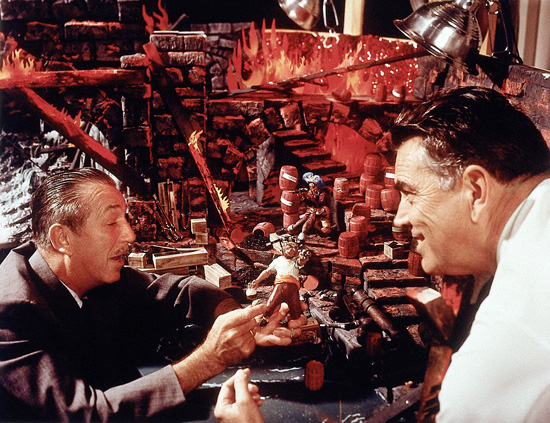
Unfortunately, Walt never saw it in person. He passed away in December 1966, five months before the ride’s opening.
That said, when visitors commented what a shame it was that Walt never got to see it, his family was known to correct them, “He did!” And indeed, the ride was exactly as Walt had envisioned – his last pet project.
After Walt
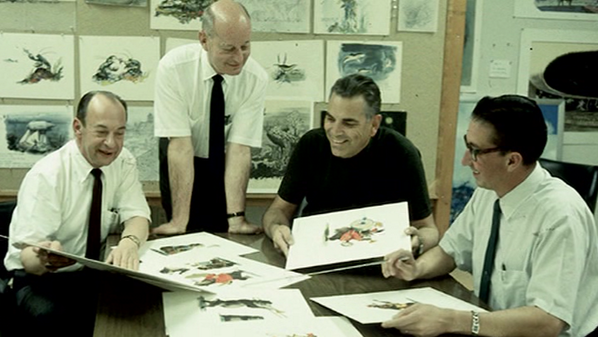
While Walt’s influence was felt throughout the creation of Pirates, it also served as the magnum opus of Marc Davis and fellow Imagineer Claude Coats. Though perhaps it’s overly simplistic, Coats and Davis are understood among Disney Parks fans for their very different and yet harmonious styles…
- Claude Coats is known as the atmospheric, dramatic, scenic stylist behind, for example, Pirates’ brooding, eerie, character-less first act.
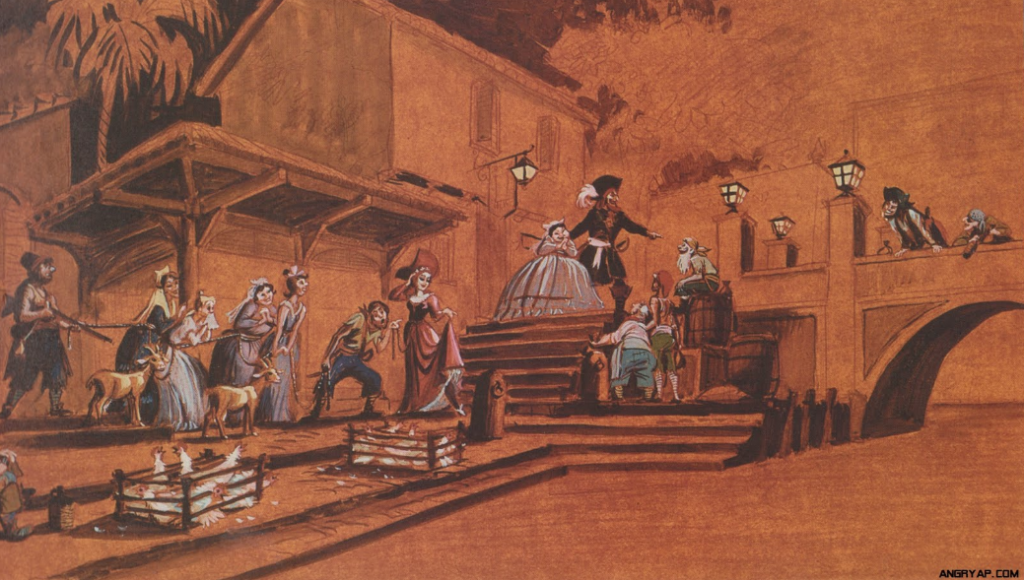
- Marc Davis – as evidenced by his work on Nature’s Wonderland, Jungle Cruise, Tiki Room, Country Bear Jamboree, and more – is widely recognized for his character designs, comedic vignettes, and perfectly-staged setups as seen in the sing-along, character-focused second act of Pirates.
Memorably, the duo’s collaboration was truly tested when they tackled the first major park project after Walt: the Haunted Mansion. Though the ride’s white plantation house façade had been built in 1963, the World’s Fair, then Pirates, then Walt’s death had sidelined the creation of the actual attraction, which still sat vacant six years later. Worse still, Walt had never clearly stated exactly what the Haunted Mansion should be. Without his direction, ideas ran the gamut.

True to form:
- Claude Coats recommended that the ride be a moody, haunting, sincerely scary trip past unexplainable special effects, haunting vignettes, and creepy sets, exemplified by Haunted Mansion’s endless hallways, foreboding ballroom, and his famous idea of an eerie loading area set in an otherworldly, endless limbo (above).
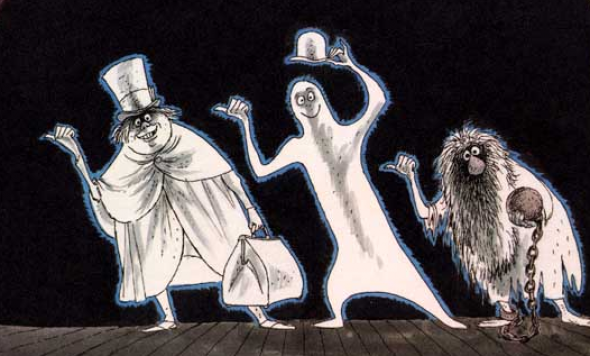
- Marc Davis developed ideas for a frightfully funny, sing-along musical ride past singing “silly spooks” with iconic characters and pun-filled vignettes like the Hatbox Ghost, the “grim, grinning” graveyard revue, or the signature Hitchhiking Ghosts (above).
Without Walt to break the tie and direct the ride’s creation, the two Imagineers battled it out over their competing ideas before eventually merging them into the Haunted Mansion we know today: a seriously-spooky, atmospheric intro with a sing-along character-filled finale (not so unlike Pirates when you think about it).
It just goes to show how uprooted things were without Walt, and the uncertainly surrounding the Haunted Mansion would only be amplified ten-fold when the new leaders at Walt Disney Productions were forced to face the looming Florida Project without Walt…
(Walt) Disney World
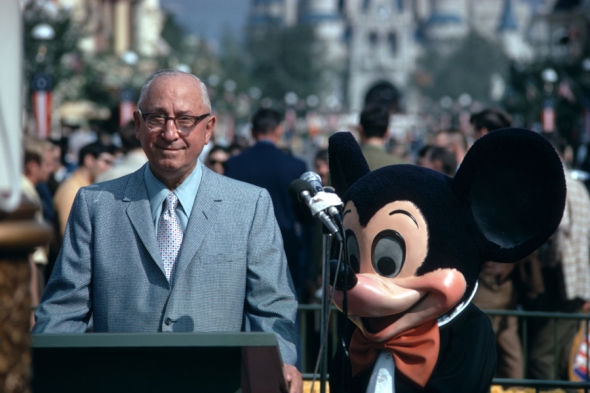
Walt’s brother Roy took over the reigns as chairman, president, and CEO of Walt Disney Productions and made a memorable first move: renaming the in-development Florida Project from Disney World to Walt Disney World to immortalize his brother’s name forever.
As for what Walt Disney World would contain? Walt’s E.P.C.O.T. was pushed to the backburner while attention shifted to the theme park that would serve as an anchor to the resort; the “Magic Kingdom” that would take all that had been learned at Disneyland and use “the blessing of size” to build out for a global audience. Walt Disney World opened in 1971 as the “Vacation Kingdom of the World” – a recreation paradise with the Magic Kingdom theme park as just one component of an international destination.
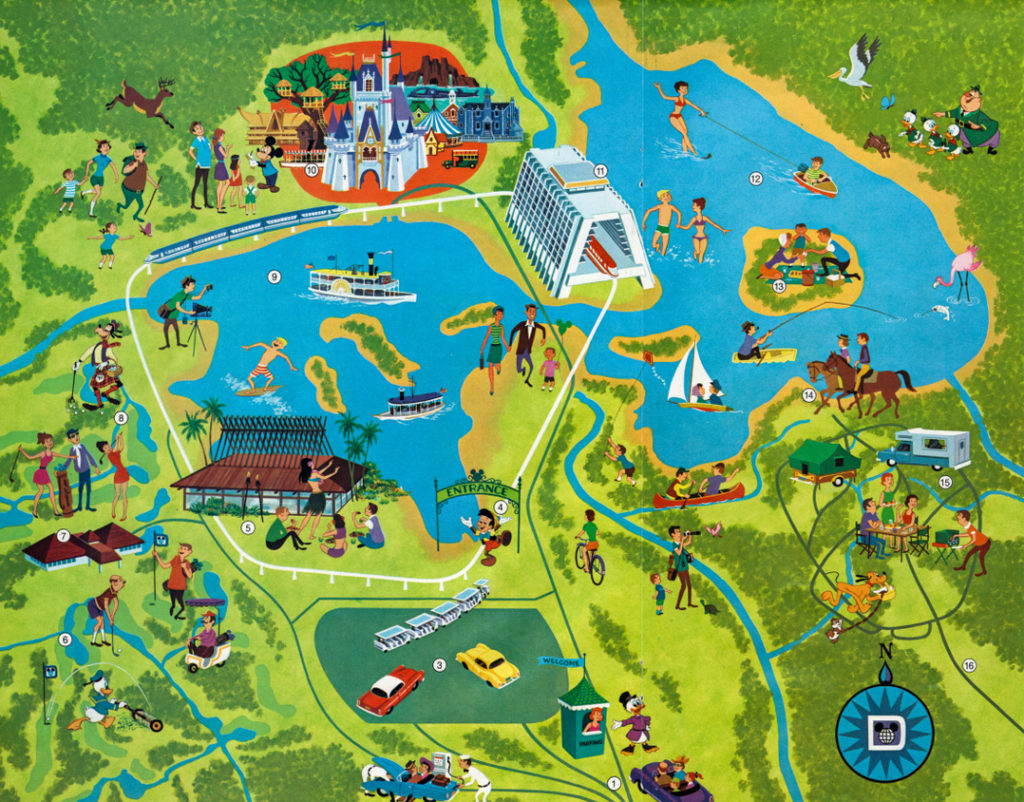
One careful balancing act was how to take the best of Disneyland and export it to this new park while still making Walt Disney World a destination in and of itself. Along the way, designers made deliberate edits, opting to include intentionally super-sized versions of Californian hits updated for ‘70s audiences and larger budgets (like Jungle Cruise, Peter Pan’s Flight, and the double-tracked Mr. Toad’s Wild Ride) while consciously curating ways for this new park to be different from its older sister…
(Too) Close to home
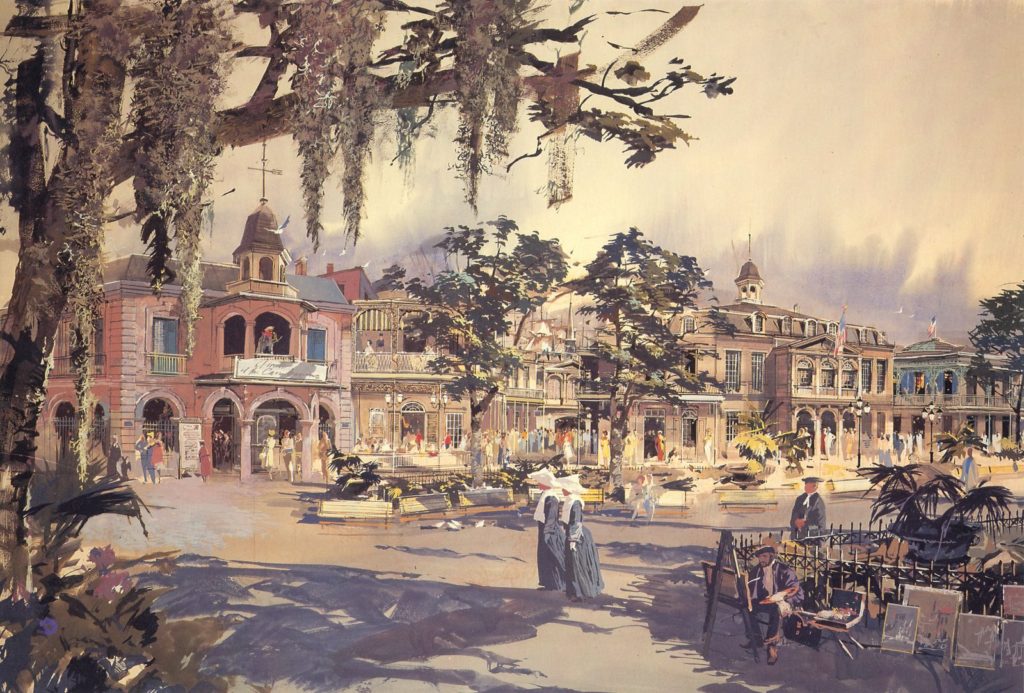
For example, consider New Orleans Square. While that recent addition to Disneyland (and its two unfathomably epic hits, Pirates and Haunted Mansion) had given Californians a romanticized look into the Jazz Age south, evaluation suggested that the Floridian locals that Disney World would market to wouldn’t find southern cuisine, music, and stories “exotic” or “romantic.” Louisiana is practically a day trip from much Florida, meaning that a copy of New Orleans Square simply wouldn’t be “magical” enough for the Magic Kingdom.
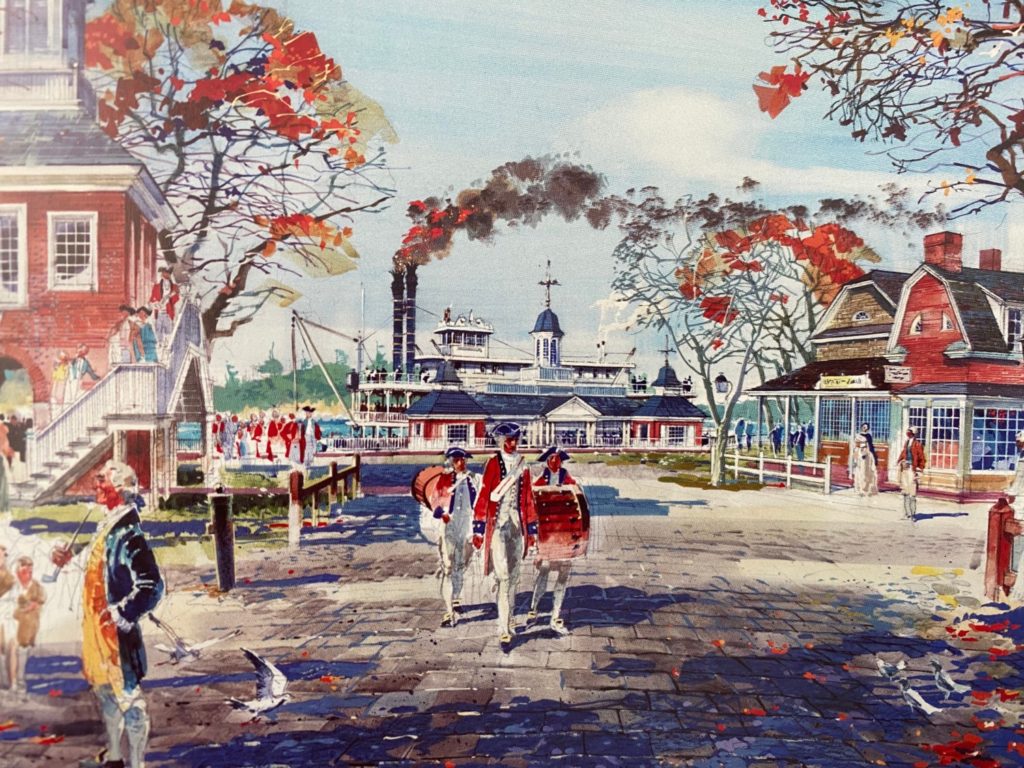
Rather, the concept of New Orleans Square was recast to a time and place that would be more exotic and romantic to Floridian guests: Liberty Square, a 1700s colonial port town. Likewise, New Orleans Square’s headlining Haunted Mansion was reskinned as a red brick colonial manor, expanded inside to include new scenes.

As for New Orleans Square’s other epic E-Ticket, Pirates of the Caribbean? Designers did their due diligence there, too. See, Disneyland’s ride through southern bayous and out into the Caribbean islands for a pirate raid might’ve been the stuff of fantasy for Californian audiences, but the real Caribbean and real pirates were actual, modern parts of Floridian culture, architecture, and news, not fantastic, literary concepts. So like New Orleans Square, designers decided to cut the Pirates ride from Magic Kingdom’s lineup entirely to opt for something a little less “everyday.”
And wouldn’t you know it, Marc Davis’ long-forgotten plans for a Lewis & Clark River Expedition seemed just the ride way to re-use the high-capacity, animatronic-heavy Pirates dark ride formula in a completely new way…
On the next page, we’ll explore what could’ve been and set sail on the most elaborate never-built E-Ticket dark ride Disney World never hosted. Read on…



